When mounting a scope on your rifle, it is crucial to know how to measure the height of the scope rings. This will ensure you have enough clearance between the barrel and the bell of your scope to get a good sight picture.
Knowing how to measure your scope height correctly is an essential part of shooting accuracy and precision. In this article, we’ll explain how are scope rings measured, what tools you need to measure them correctly, as well as tips for choosing the right size and type of ring for your rifle setup. Let’s get started.
How to Measure Scope Height: What You Need to Know
There has been an inordinate amount of chatter about scope height. Reams have been written on the topic. It is important when buying fresh scope rings. Covered below is a comprehensive guide on how to measure scope ring height. After you have read this carefully, I am sure you will have all the doubts perished.
Why Is Scope Height Important?
An insight into the trajectory a hunting bullet takes will explain why scope ring height is an important consideration. Light, leaving refraction aside, advances straight linearly, as we all know.
When an object is viewed through the scope, whether the hunting, long-range, or thermal scope, it is a ‘line of sight,’ which is a straight line.
Sadly, the bullet thinks otherwise and travels in a loop, subject to natural weather conditions, the Coriolis effect, etc., which we will disregard. The main force acting constantly and unchanged on the bullet is gravity.
This causes the bullet to drop. The net effect is that the barrel points slightly so that the bullet intercepts the sight offset, the scope’s line of vision.
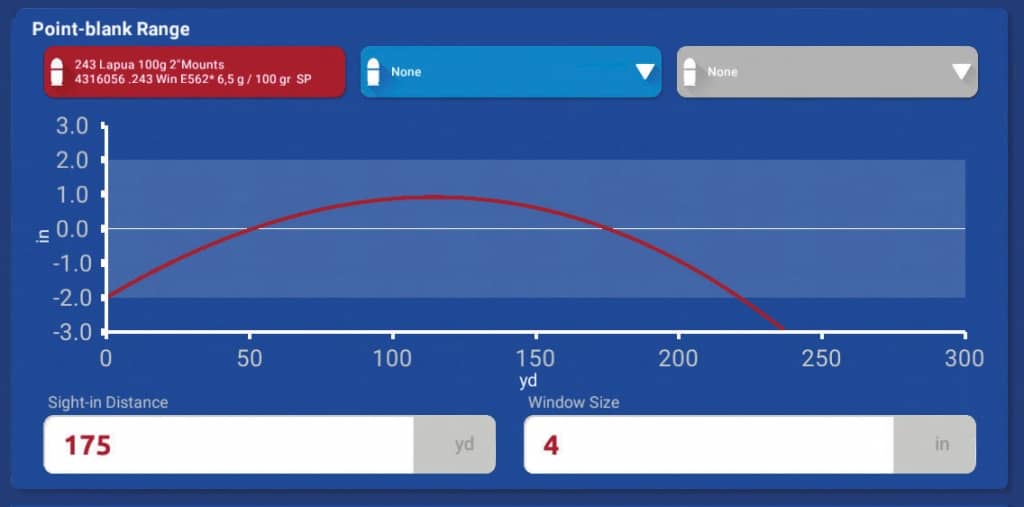
The bullet crosses the zero height first at around 50 yards. This is called “Secondary Zero.” Again it intercepts zero at 175 yards which is the “Primary Zero.”
The “Kill Zone” or “Kill Window” is 4 inches, as seen from the diagram. Point Blank Range is one where you aim and pull the trigger without accounting for bullet drop as accuracy is high.
Measuring Scope Height Approximately
To get a rough scope height measurement, count the diameter in mm of the objective lens (the leading lens), add 2-4mm for the thickness of the scope body, and half the result.
That figure is your scope ring height. Another way to do it is to measure the scope tube diameter at the objective lens and half that.
Selecting The Right Base
This is pretty simple, as most manufacturers will make only one specific type of base for your receiver. However, be cautioned that the base height will contribute to ringing height.
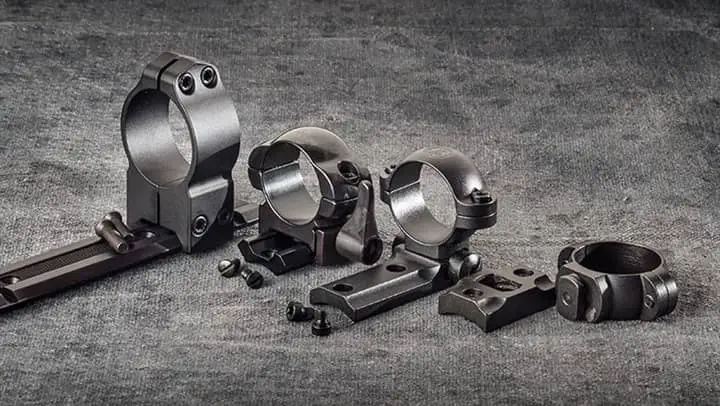
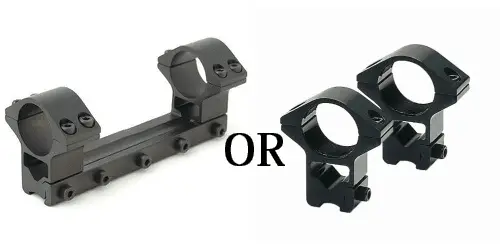
Bases can be of one piece or two. Single-piece bases withstand recoil forces better but can impede access to the breach hampering loading and unloading.
Adaptive slots for paired cross bolts on each ring are furnished on Weaver-style and Picatinny bases rails. Their beveled edges deliver a fitting interface for clamping the rings.
In Talley bases, the cross bolts are dispensed. They are machined so that the entire bottom of the base is flush.
An ovaline cutout is provided on Dovetail bases equipped with and fits a wedge on the lower half of the ring.
Some manufacturers provide proprietary integral bases on rifles.
Selecting The Right Rings
Rings are made to conform to the base. If you use a Dovetail base, you must use Dovetail rings only.
Rings are of two types; Horizontally split or Vertically split. Integral to the base is the lower half of horizontally split rings, making it that much easier to install or change. More difficult to install is a vertically split ring that engages the base.
Vertically split rings make for a more robust mount and make fuller contact with the scope tube.
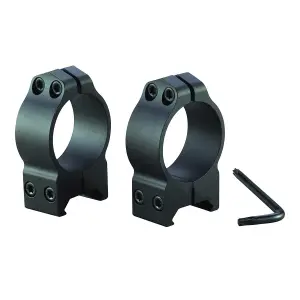
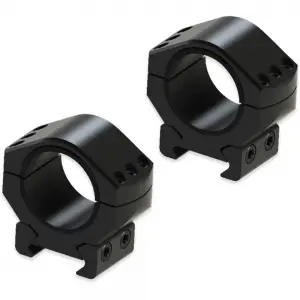
Measuring Ring Height
The height of rings varies from manufacturer to manufacturer. Available scope ring sizes are
Base to Ring Center
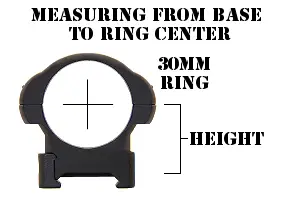
This part is uncomplicated if your preferred manufacturer adopts this method of measuring their ring heights.
Get your base height, and add ring height. If the result is the smaller combination obtainable that is greater than your scope height, you’re in business; you’ve found your ring and base combination.
Base to Ring Edge
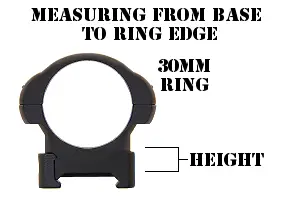
A little more calculation is required if your manufacturer measures from the base to the ring’s inner edge.
Considering that your scope is a 1-inch tube, add 12.7mm to the compound height of the base and ring to ascertain if it is greater than your scope height sizing.
If your scope has a 50mm scope tube, add 25mm to the combined height of the base and ring and determine if it’s greater than your scope height evaluation.
Ring Height Chart
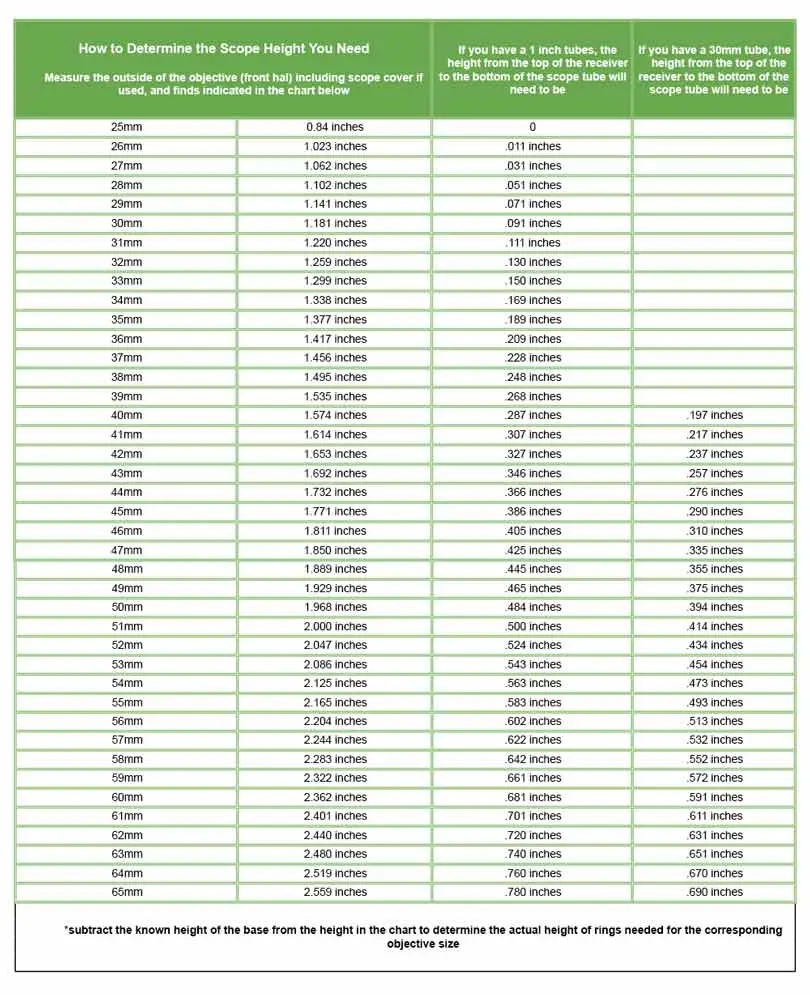
Things Worth Consideration
The scope height effects should be such that the shooter’s cheek makes comfortable contact. This is termed cheek weld. Most rifle mounts are not amenable to high mounts.
The right height will help users lap scope rings perfectly. The shooter is rendered balancing their chin bottom on top of the stock instead of resting a cheek on it.
Other factors for in-scope ring height should be allowed, such as bolt action clearance, open sights, and other accessories.
And this is how to measure sight height like a pro!
Summarizing
Hopefully, this guide has been of use not only in comprehending why scope height is so important in the overall performance of your shooting rig. By now, you should have a pretty good idea of how to determine scope ring height and why it is so important.
Do follow the guidelines, and you will spend less ammo if you’re after varmints, deer, or rabbits. Enjoy your rabbit stew tonight.
FAQs:
Q. What height rings for 42mm scopes?
Ans. Using the lowest rings is a good idea since they let the front optics clear the barrel. You may need mediums with 42mm objectives. High rings are unnecessary and low rings may not give enough clearance.
Q. How high are medium-height scope rings?
Ans. One-inch medium rings have a 0.169-inch saddle height. The saddle height for one-inch low scope rings is 0.089 inches and 0.332 inches for one-inch high rings.
Q. Which is better 40mm or 50mm scope?
Ans. The difference between 40mm and 50mm scopes isn’t significant. A 50mm lens won’t necessarily give you a brighter target image. A 40mm lens with superior coating and lens may perform just as well or even better.
Q. How far should a barrel be from a scope?
Ans. The clearance between the top of the barrel and the bottom of the objective should be 1/8th of an inch or more. For scope base height, your second choice will give adequate clearance.

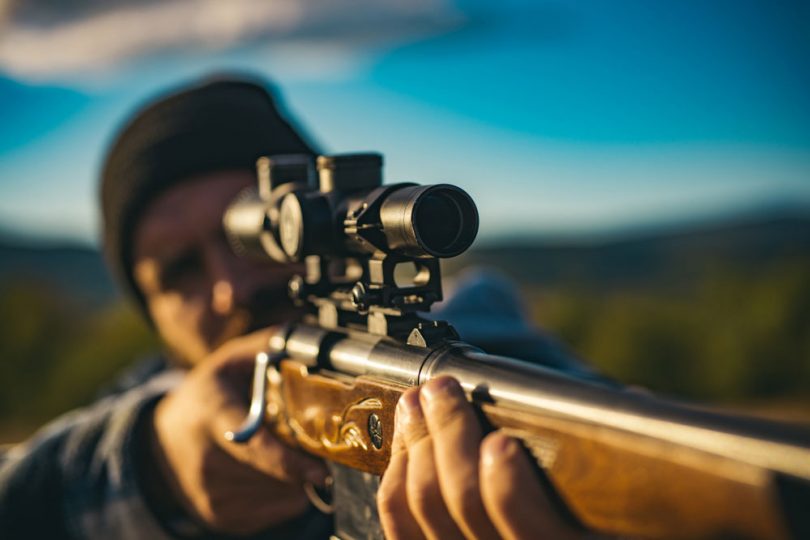







Leave a Comment